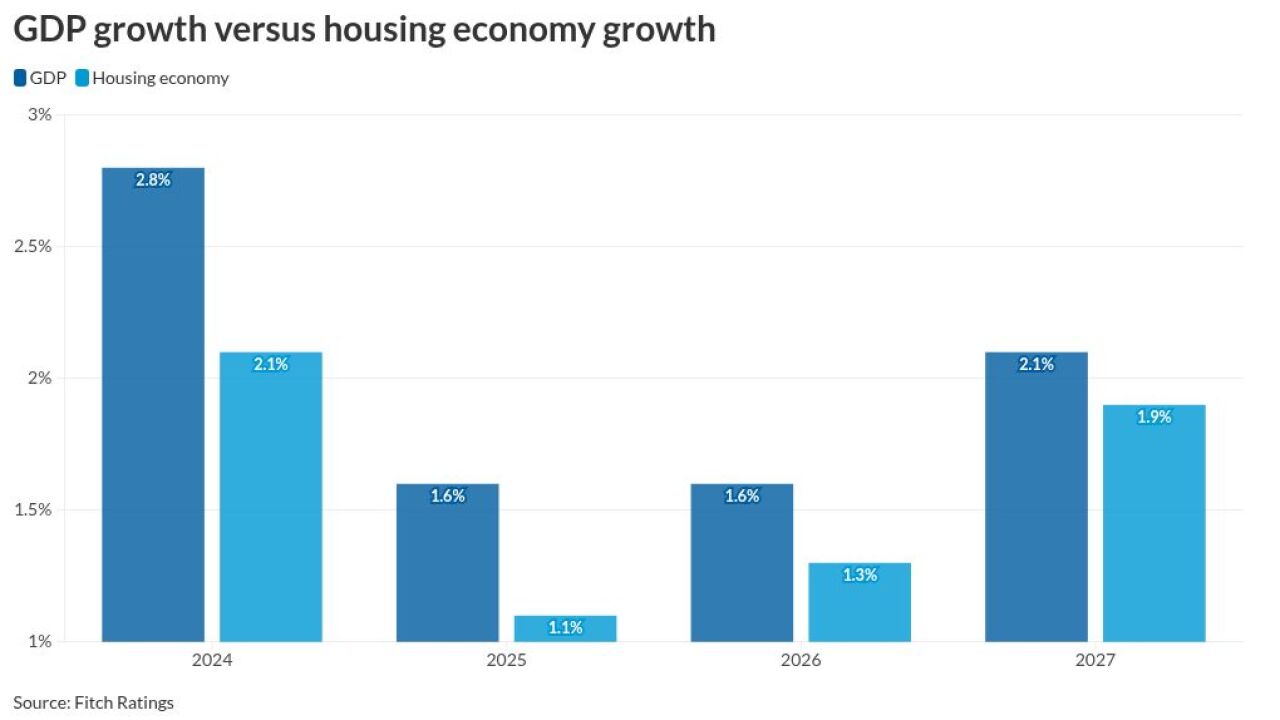Some CLO BB-rated notes have taken a beating over the last year when pricing on leveraged loans in their portfolios cratered, resulting in CLO pricing and returns plummeting, a tiered market, a harrowing ride for some investors, and potential opportunity for others.
“Does it deter us from being involved in the CLO sector? No,” said Jason Merrill, an investment specialist at Penn Mutual Asset Management, with $28.1 billion assets under management. Increasing volatility raises concerns, “but not enough to cause us to back away from the sector.”
Nevertheless, increased volatility in the leveraged loan space is clearly prompting skittishness on behalf of buyers of CLO BB notes, which are typically the lowest-rated debt tranches sold in collateralized loan obligation vehicles. (Market conditions may intermittently permit issuers to issue single-B rated, non-investment-grade notes in deals.)
Increasingly bifurcated views on loan quality is creating wide disparities in pricing.
For example, market value over-collateralization (MVOC)—a common coverage metric calculated by dividing the market value of a CLO’s assets by its liabilities’ par amount—may be the same for two CLOs, with spreads revealing investors’ concerns about one.

“Two CLO BBs could have MVOCs of 104 [basis points] but one could trade at +750 and the other at +950 due to the tail risks that portfolio,” said Neil Desai, managing director and head of structured credit investing at WhiteStar Asset Management.
That disparity largely stems from plummeting prices of some of the underlying CLOs’ holdings. Desai said unexpectedly poor earnings, litigation or other indications of credit distress, used to result in loan prices dropping 2% or 3%.
“In today’s market, that same kind of information can result in drops of 20% or more,” Desai said.
He noted two extreme examples involving speculative-grade corporate borrowers: McDermott International and Constellis Holdings. Each firm’s loan prices now hover around 50, down from the 90s at the start of the year. “The exaggerated movement in loan prices is what’s scaring BB CLO investors, because they don’t know which loan is the next to drop is going to come, and they’re worried that if they have a loan trading now trading at 90, tomorrow it could drop to 70.”
Desai noted that in October less than 9% leveraged loans were below a price level of 90, but it was only 2% a year earlier.
In a Nov. 26 report, S&P Global Ratings reported that exposure to single-B rated obligors in CLO portfolios has reached an all-time high of 19%, increasing the potential for asset downgrades that could breach managers’ strict limits on triple-C assets.
Several factors appear to be instigating worries. The loan default rate is increasing, if still modestly. And, as Wells Fargo notes in a Nov. 21 report, a slowing economy and increased fears about ratings downgrades are fundamental concerns prompting investors to “focus on quality.” The bank anticipates the decline will hitting weaker CLO BBs especially hard.
An illustration of that was provided by a buy-side source who noted recent dealer quotes on two CLO BB bond tranches managed by Credit Suisse Asset Management and Par-Four Investment Management.
The CSAM transaction, with an MVOC of 105, priced just below par at 99.25 for a spread of 562 basis points. Par-Four’s deal, with an MVOC of 102% and a price of 81, had a spread of 995 basis points.
“Note that the two bonds are three points away in MVOC and the spread offers are 400 basis points and 18 price points apart,” the source said. “Some of that is due to different duration and managers, but a large portion of it is attributable to the different MVOCs.”
One factor weakening prices of existing CLO BBs, the source said, may be that investors are focusing on the primary-issue market, where MVOCs are range bound and have more credit enhancement, reducing demand for existing transactions.
In addition, CLO BB investors in some cases may be throwing the baby out with the bath water. For example, Endo Pharmaceuticals’ and Mallinckrodt Pharmaceuticals’ loans, both widely held in CLOs, have seen punishing price drops, Desai said, even though Endo is a much stronger credit overall.
In fact, he added, history demonstrates that CLO BB investors can overreact, leading to steeper drops than in the high-yield market. It wasn’t long ago, in February 2016, that J.P. Morgan’s US CLO Index (CLOIE), plummeted to a low of 67.8 from 90 three months earlier.
Still, the BB CLO market tends to follow high yield, which has rallied strongly this year. “That’s why we’re bullish on BB CLOs, because it has been lagging significantly,” Desai said.
Michael Ning, managing director at MacKay Shields, said that downgrades in the loan space have been “pretty ugly” and even accelerated, noting single B-rated credits now make up 19% of the market, up from 13% a year ago.
Nevertheless, he’s reservedly bullish on CLO BB loans, noting positive signs such as the China slowdown bottoming, U.S. corporate profits recovering somewhat, and the Fed’s rate cuts on hold. And while investors are opting for higher-quality loans, “repricing recession risk,” Ning said, if the U.S. avoids a recession and interest rates remain low, he foresees investors returning to CLO BBs in their quest for yield.
“Investors have been bearish on loans a couple of times in the past several years … this is not the first time,” he said. “It’s too early to call a recession now, so in six months we may be talking about a very different story.”
In fact, there are indications the CLO BB market is strengthening. J.P. Morgan’s CLOIE BB Index Total Return was 0.40% in 2018, and year to date through Dec. 2 it was 6.29%, according to the bank’s CLO research team.
If the default rate continues to rise, however, CLO BB volatility could continue, Desai said, although as both a CLO manager and investor, his firm can carefully analyze loan collateral to determine which ones to hold.
“We’re happy to buy something at 90 and withstand the volatility,” Desai said. “If our cost basis is 90, that’s still a double-digit internal rate of return on a three- or four-year security. And if we can weather the interim volatility, then we’re going to do that.”





